
漢德百科全書 | 汉德百科全书
 Toscana
Toscana
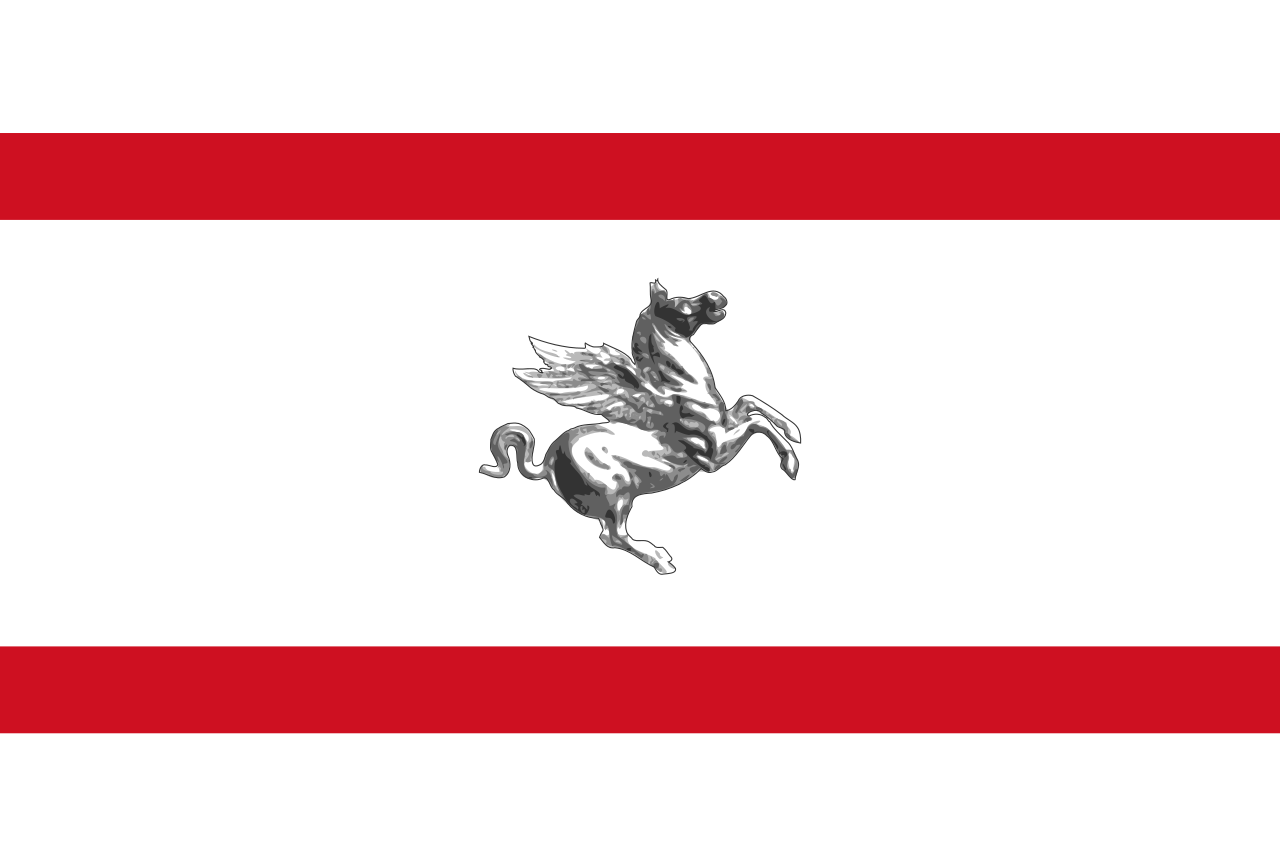
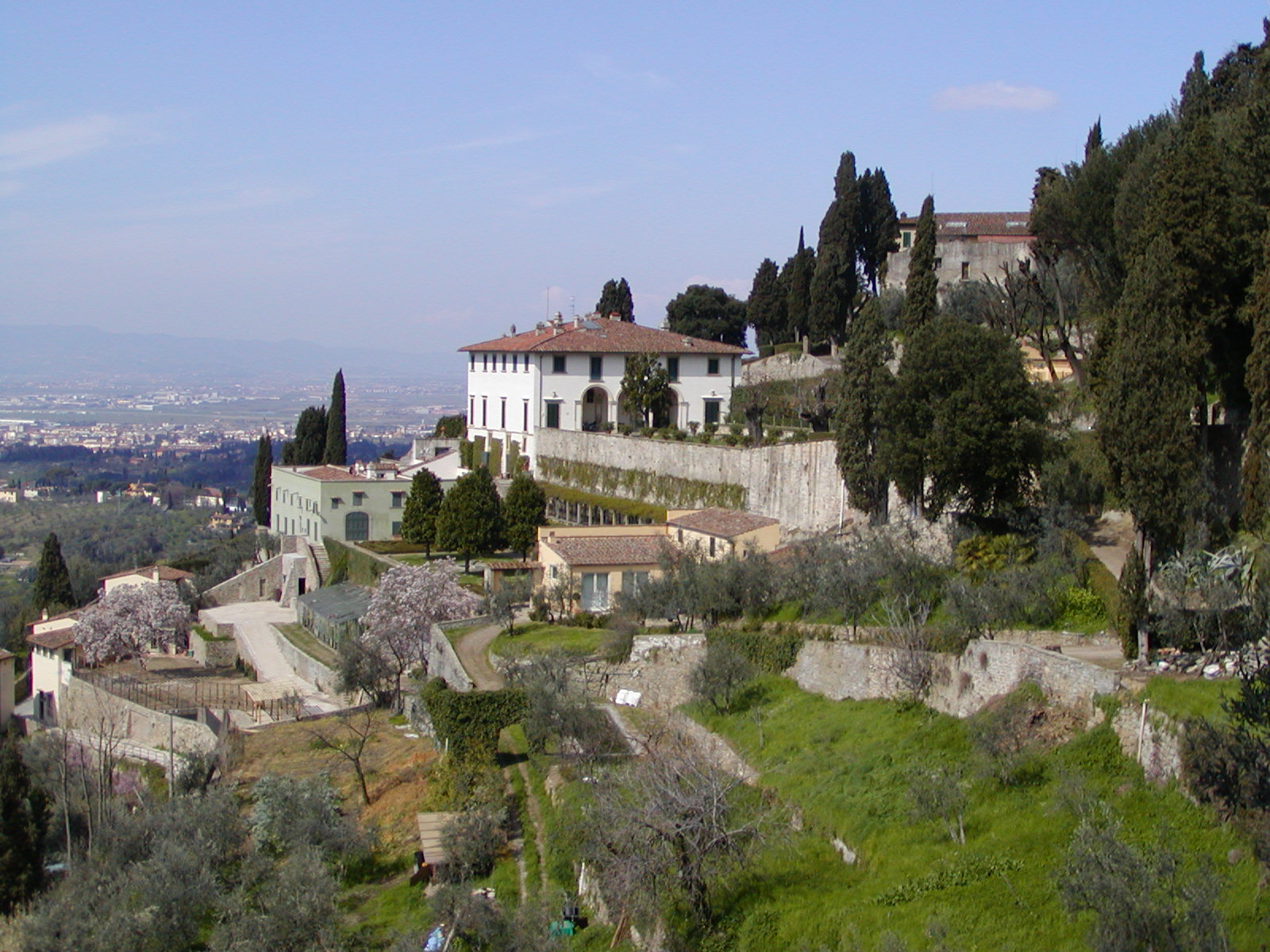
Die Villa Medici in Fiesole ist eine der ältesten und am besten erhaltenen Villenbauten der Familie Medici. Sie wurde 1451 bis 1457 auf Geheiß von Cosimo de’ Medici durch Michelozzo di Bartolommeo für Giovanni di Cosimo de’ Medici, Cosimos zweitältesten Sohn errichtet. Die Villa fungierte nicht als Zentrum eines agrarwirtschaftlichen Betriebes sondern als Ort der Erholung und der ästhetischen und intellektuellen Anregung. Lorenzo il Magnifico erbte den Besitz 1469 von seinem Onkel, er versammelte hier Marsilio Ficino, Pico della Mirandola und Angelo Ambrogini, alias Poliziano. Die Villa blieb im Besitz der Medicis bis 1671.
Der Garten der Villa ist auf drei Terrassen ausgelegt. Auf der obersten stehen Zitronenbäume in Töpfen, die zweite ist mit Magnolienbäumen, Blumenrabatten, Buchsbaumhecken und einem großen zentralen Brunnen ausgestattet. Die dritte Terrasse wurde 1911 bis 1923 von Cecil Pinsent und Geoffrey Scott im italienischen Stil mit einer Pergola ausgestaltet. Die Villa ist in Privatbesitz und nur äußerst beschränkt zu besichtigen.



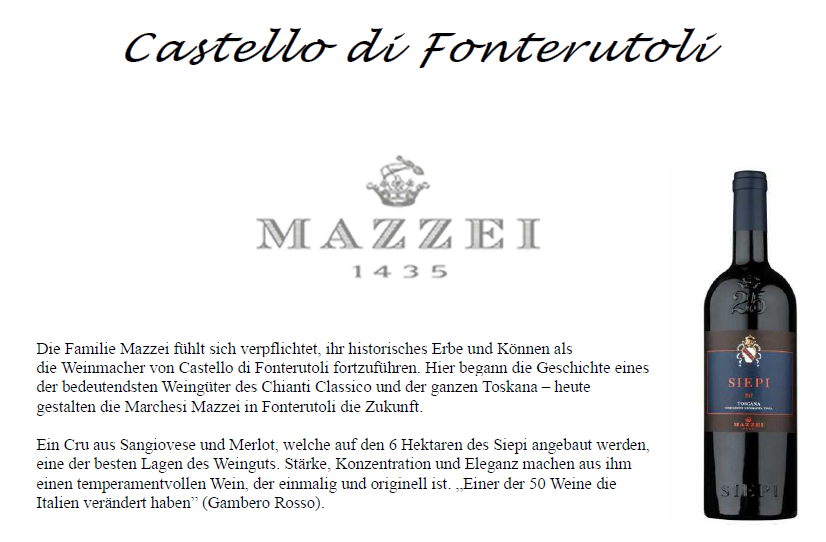


 Architecture
Architecture
 FIFA Fussball-Weltmeisterschaft 1990
FIFA Fussball-Weltmeisterschaft 1990

 History
History

 International cities
International cities
 *European Capital of Culture
*European Capital of Culture
 Italy
Italy

 Art
Art

 Toscana
Toscana
 Florenz
Florenz

 World Heritage
World Heritage

Florenz (italienisch Firenze [fiˈrεnʦe]) ist eine italienische Großstadt mit 382.258 Einwohnern (Stand 31. Dezember 2016). In der Metropolregion leben etwa eine Million Menschen. Florenz ist Hauptstadt sowie größte Stadt der Toskana und der Metropolitanstadt Florenz. In Italien ist Florenz die nach Einwohnern achtgrößte Stadt.
Florenz ist für seine Geschichte berühmt. Als Zentrum des spätmittelalterlichen europäischen Handels- und Finanzwesens war es eine der reichsten Städte des 15. und 16. Jahrhunderts. Florenz gilt als die Wiege der Renaissance. Aufgrund seiner kulturellen Bedeutung – insbesondere für die bildende Kunst – wird es schon seit dem 19. Jahrhundert auch als das „italienische Athen“ bezeichnet.[2][3][4][5]
Durch die mächtige Dynastie der Familie Medici stieg Florenz in der Renaissance zu einer der florierendsten Metropolen Europas auf. Zahlreiche Kunstschaffende und Geistliche waren hier beheimatet: Leonardo da Vinci verbrachte große Teile seiner Jugend in Florenz, Michelangelo fand Unterschlupf in der Kirche der Medici, Galileo Galilei wohnte als Hofmathematiker in den Palästen der Medici. Von 1865 bis 1870 war die Stadt die Hauptstadt des neu gegründeten Königreichs Italien.
Das historische Zentrum von Florenz zieht Jahr für Jahr Millionen von Touristen an. Euromonitor International platziert die Stadt mit fast 4,2 Millionen Besuchern im Jahr 2015 weltweit an 40. Stelle unter den meist besuchten Städten.[6] Die historische Innenstadt wurde von der UNESCO im Jahre 1982 zum Weltkulturerbe erklärt. Aufgrund des künstlerischen und architektonischen Erbes hat das Forbes Magazine Florenz als eine der schönsten Städte der Welt ausgewählt.[7] Hingewiesen wird vor allem auf den Reichtum an Museen, Palästen und Denkmälern.
佛罗伦萨(意大利语:Firenze,拉丁语:Florentia,意大利诗歌:Fiorenza,又译佛罗伦斯、翡冷翠)是意大利中部[1]托斯卡纳大区和佛罗伦萨省的首府,拥有366,091名城市人口[2],是该地区面积最大、人口最多的城市,以及主要的历史、文化和商业中心。从该市延伸出去的佛罗伦萨-普拉托-皮斯托亚都会区共有1,506,098名居民。
佛罗伦萨曾经长期处于美第奇家族控制之下,是欧洲中世纪重要的文化、商业和金融中心,并曾一度是意大利统一后的首都(1865-1871年)。
佛罗伦萨被认为是文艺复兴运动的诞生地,艺术与建筑的摇篮之一,拥有众多的历史建筑,和藏品丰富的博物馆(诸如乌菲兹美术馆、学院美术馆、 巴杰罗美术馆、碧提宫内的帕拉提那美术馆等)。历史上有许多文化名人诞生、活动于此地,比较著名的有诗人但丁、画家列奥纳多·达·芬奇、米开朗基罗、政治理论家马基维利、雕塑家多纳太罗等。佛罗伦萨历史中心被列为世界文化遗产。
フィレンツェ(イタリア語: Firenze (![]() 音声ファイル))は、イタリア共和国中部にある都市で、その周辺地域を含む人口約38万人の基礎自治体(コムーネ)。トスカーナ州の州都、フィレンツェ県の県都である。
音声ファイル))は、イタリア共和国中部にある都市で、その周辺地域を含む人口約38万人の基礎自治体(コムーネ)。トスカーナ州の州都、フィレンツェ県の県都である。
中世には毛織物業と金融業で栄え、フィレンツェ共和国としてトスカーナの大部分を支配した。メディチ家による統治の下、15世紀のフィレンツェはルネサンスの文化的な中心地となった。
市街中心部は「フィレンツェ歴史地区」としてユネスコの世界遺産に登録されている。1986年には欧州文化首都に選ばれた。
Florence (/ˈflɒrəns/ FLORR-ənss; Italian: Firenze [fiˈrɛntse] ( listen))[2] is the capital city of the Italian region of Tuscany. It is the most populous city in Tuscany, with 383,084 inhabitants in 2013, and over 1,520,000 in its metropolitan area.[3]
listen))[2] is the capital city of the Italian region of Tuscany. It is the most populous city in Tuscany, with 383,084 inhabitants in 2013, and over 1,520,000 in its metropolitan area.[3]
Florence was a centre of medieval European trade and finance and one of the wealthiest cities of that era.[4] It is considered the birthplace of the Renaissance, and has been called "the Athens of the Middle Ages".[5] A turbulent political history includes periods of rule by the powerful Medici family and numerous religious and republican revolutions.[6] From 1865 to 1871 the city was the capital of the recently established Kingdom of Italy. The Florentine dialect forms the base of Standard Italian and it became the language of culture throughout Italy[7] due to the prestige of the masterpieces by Dante Alighieri, Petrarch, Giovanni Boccaccio, Niccolò Machiavelli and Francesco Guicciardini.
The city attracts millions of tourists each year, and the Historic Centre of Florence was declared a World Heritage Site by UNESCO in 1982. The city is noted for its culture, Renaissance art and architecture and monuments.[8] The city also contains numerous museums and art galleries, such as the Uffizi Gallery and the Palazzo Pitti, and still exerts an influence in the fields of art, culture and politics.[9] Due to Florence's artistic and architectural heritage, it has been ranked by Forbes as one of the most beautiful cities in the world.[10]
Florence is an important city in Italian fashion,[9] being ranked in the top 15 fashion capitals of the world;[11] furthermore, it is a major national economic centre,[9] as well as a tourist and industrial hub. In 2008, the city had the 17th highest average income in Italy.[12]
Florence (en italien : Firenze, prononcé /fi'rɛnʦe/) est la huitième ville d'Italie par sa population, capitale de la région de Toscane et siège de la ville métropolitaine de Florence.
Berceau de la Renaissance en Italie, capitale du royaume d'Italie entre 1865 et 1870, inscrit sur la liste du patrimoine mondial de l'UNESCO au titre du Centre historique de Florence, la ville présente une richesse artistique exceptionnelle (églises, musées, palais), et est devenue un grand centre touristique.
Firenze (AFI: /fiˈrεnʦe/[4]; pronuncia[?·info]; in epoca medievale e nel linguaggio poetico anche Fiorenza, /fjoˈrɛnʦa/[5][6]; Florentia in latino) è un comune italiano di 380 005 abitanti, capoluogo della Toscana e centro della propria città metropolitana con una popolazione di 1 012 307 abitanti. È l'ottavo comune italiano per popolazione e il primo[7] della Toscana.
La città di Firenze è il cuore dell'area metropolitana Firenze - Prato - Pistoia, una conurbazione che conta oltre 1 520 000 abitanti[8][9].
Nel Medioevo è stata un importante centro artistico, culturale, commerciale, politico, economico e finanziario. Nell'età moderna ha ricoperto il ruolo di capitale del Granducato di Toscana, dal 1569 al 1859, con il governo delle famiglie dei Medici e dei Lorena.
Nel 1865 Firenze fu proclamata capitale del Regno d'Italia (seconda, dopo Torino). La città mantenne questo status fino al 1871, anno che segna la fine del Risorgimento.
Importante centro universitario e patrimonio dell'umanità UNESCO, è considerata luogo d'origine del Rinascimento ed è universalmente riconosciuta come una delle culle dell'arte e dell'architettura, nonché rinomata come una delle più belle città del mondo, grazie ai suoi numerosi monumenti e musei – tra cui il Duomo, Santa Croce, Santa Maria Novella, gli Uffizi, Ponte Vecchio, Piazza della Signoria, Palazzo Vecchio e Palazzo Pitti.
Florencia (Firenze en italiano) es una ciudad situada en el norte de la región central de Italia, capital y ciudad más poblada de la Ciudad metropolitana homónima y de la región de Toscana, de la que es su centro histórico, artístico, económico y administrativo. Cuenta con unos 378 236 habs.,2 y es el centro de un área metropolitana de aproximadamente un millón y medio de habitantes.
Capital de Italia entre 1865 y 1871 durante la Unificación italiana, en la edad media fue un importante centro cultural, económico y financiero. Conoció su época de mayor esplendor tras la instauración del Gran Ducado de Toscana bajo el dominio de la dinastía Médici.
Florencia es el núcleo urbano en el que se originó en la segunda mitad del siglo XIV el movimiento artístico denominado Renacimiento, y se la considera una de las cunas mundiales del arte y de la arquitectura así como también una de las ciudades más hermosas del mundo. Su centro histórico fue declarado Patrimonio de la Humanidad en 19823 y en él destacan obras medievales y renacentistas como la cúpula de Santa María del Fiore, el Ponte Vecchio, la Basílica de Santa Cruz, el Palazzo Vecchio y museos como los Uffizi, el Bargello o la Galería de la Academia, que acoge al David de Miguel Ángel.
Флоре́нция (итал. Firenze [fiˈrɛnʦe], лат. Florentia) — итальянский город на реке Арно, в прошлом — центр Флорентийской республики, столица герцогов Медичи и Итальянского королевства. Ныне административный центр региона Тоскана. Население — 382 347 человек (2017)[2].
Несмотря на удалённость от моря и постоянные политические волнения, Флоренция XIII—XVII веков внесла грандиозный вклад в развитие европейской и мировой цивилизации. Город дал миру таких гигантов, как Леонардо да Винчи, Микеланджело, Донателло, Никколо Макиавелли, Данте и Галилея. Местный диалект лёг в основу литературного итальянского языка, флорентийская монета стала эталоном для всей Европы, флорентийские художники разработали законы перспективы, флорентийский мореплаватель Америго Веспуччи дал своё имя двум континентам, а флорентийские мыслители положили начало эпохе Ренессанса, в связи с чем Флоренция по праву носит имя «Колыбель Возрождения».
Флоренция является важным городом итальянской моды[3] и была удостоена 31[4] места в рейтинге модных столиц мира. Кроме того, Флоренция — это национальный экономический, туристический и индустриальный центр Италии[3], который в 2008 году занял семнадцатое место в списке итальянских городов с наибольшей прибылью.[5]
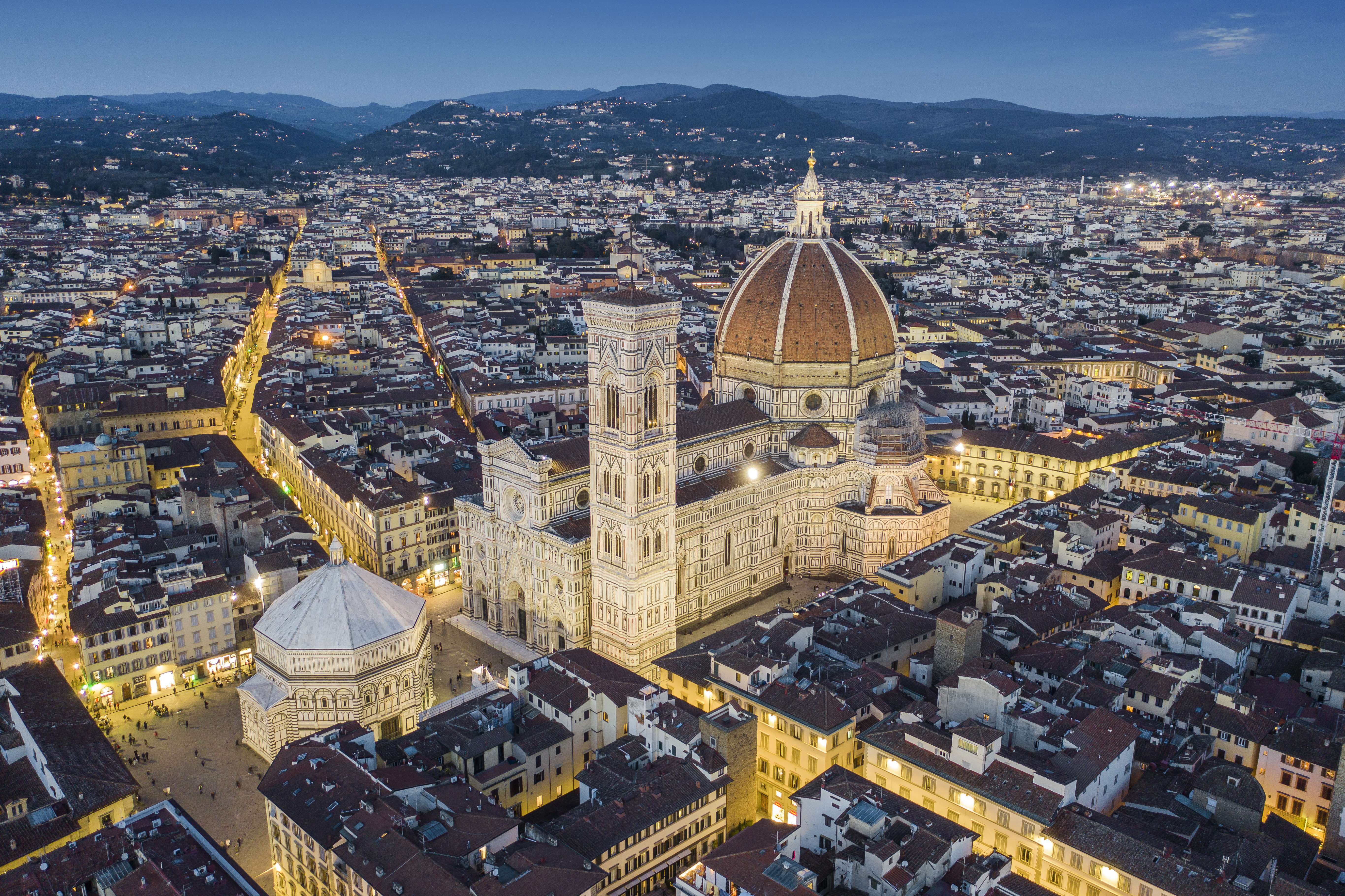

圣母百花圣殿,又称花之圣母大教堂(意大利语:Cattedrale di Santa Maria del Fiore)或佛罗伦斯主教座堂。是位于意大利佛罗伦斯的一座教堂,属哥特式风格的主教座堂。始建于1296年,由建筑师阿尔诺夫·迪·卡姆比奥设计,并采用了精通罗马古建筑的工匠菲利波·布鲁内莱斯基著名的圆顶(穹顶)建造,1436年最终完工。
大教堂有着十九世纪哥德复兴风格的立面,出自建筑师埃米利奥.德法布里斯之手。其外部使用色调深浅不同的白、绿和粉红多色的大理石块所铺砌而成,色彩斑斓而和谐。整个教堂建筑群位于主座教堂广场,由主教座堂、圣若望洗礼堂和乔托钟楼构成,并被列入联合国教科文组织的世界遗产佛罗伦斯历史中心(1982年)的一部分,因此吸引了世界各地游客纷至沓来,是托斯卡尼地区的旅游胜地。
圣母百花圣殿是意大利最大的教堂之一,而其圆顶是有史以来最大的砖造穹顶。大教堂是天主教佛罗伦斯总教区的主教堂,目前的总主教是朱塞佩·贝托里。
1982年,圣母百花大教堂作为佛罗伦斯历史中心一部分被列入世界遗产。
圣约翰洗礼堂位于主教座堂西边数米,7世纪即已建成,11世纪改建成现在的模样。为白色八角形罗曼式建筑。佛罗伦萨的孩童均在此受洗,包括但丁、马基雅弗利等名人。洗礼堂三扇铜门上刻有《旧约》故事的青铜浮雕,其中二扇为吉贝尔蒂所作,被米开朗基罗赞为“天国之门”。
钟塔高85米,最初于1334年由大画家乔托设计并监工,因此俗称“乔托钟塔”。属哥特式建筑,由六层方型结构向上堆叠成柱形,外墙铺白色大理石,纯净优雅。
主教座堂于1296年奠基,1347年秋天爆发黑死病迫使工程中断。1367年由全民投票决定在教堂中殿十字交叉点上建造直径43.7米,高52米的八角形圆顶。1418年佛罗伦萨市政府公开征集能够设计并建造大圆顶的方案。精通罗马古建筑的工匠菲利波·布鲁内列斯基胜出,为总建筑师。在建造拱顶时,没有采用当时流行的“拱鹰架”圆拱木架,而是采用了新颖的“鱼刺式”的建造方式,从下往上逐次砌成。主教座堂于1436年3月25日,举行献堂典礼。百年之后,米开朗基罗在罗马圣彼得大教堂也建了一座类似的大圆顶,却自叹不如:“我可以建一个比它大的圆顶,却不可能比它的美。”
大穹顶内部为16世纪佛罗伦萨画家乔尔乔·瓦萨里所绘巨幅天顶画《末日审判》。中殿北墙上有乌切洛所绘《乔凡尼·阿古托纪念碑》和为纪念但丁诞辰200年所绘的《但丁与神曲》(1465年)。
サンタ・マリア・デル・フィオーレ大聖堂(サンタ・マリア・デル・フィオーレだいせいどう、イタリア語: Cattedrale di Santa Maria del Fiore)は、イタリアのフィレンツェにあるキリスト教・カトリックの教会である。フィレンツェの大司教座聖堂であり、ドゥオーモ(大聖堂)、サン・ジョヴァンニ洗礼堂、ジョットの鐘楼の三つの建築物で構成される。教会の名は「花の(聖母)マリア」の意である。
巨大なドームが特徴の大聖堂は、イタリアにおける晩期ゴシック建築および初期ルネサンス建築を代表するもので、フィレンツェのシンボルとなっている。石積み建築のドームとしては現在でも世界最大[要出典]である。このドームは予算削減と耐久性を考慮し、二重構造のドームで互いを押し合う設計になっており、木枠を使わずに煉瓦を積み上げて製作している(en:Opus spicatumを参照)。
建物の主軸はほぼ東西に通り、西に八角形の洗礼堂、東にラテン十字の平面をもつ大聖堂がならび、両者の正面玄関が正対する。大聖堂は東に至聖所、西に正面玄関をもつ。キリスト教において東はイエス・キリストを象徴する方角であり、教会の祭壇は東に正対しておかれるのが基本形であった(西ヨーロッパの大聖堂建築を参照)。
鐘楼は大聖堂の南西隅に配置されている。大聖堂の広場をへだてた東側には付属の美術館があり、教会の宝物や、かつて外部をかざっていた美術品がおさめられている。
三つの建築物とも世界遺産フィレンツェ歴史地区の一部として指定されている。
Florence Cathedral, formally the Cattedrale di Santa Maria del Fiore (Italian pronunciation: [katteˈdraːle di ˈsanta maˈriːa del ˈfjoːre]; in English "Cathedral of Saint Mary of the Flower"), is the cathedral of Florence, Italy (Italian: Duomo di Firenze). It was begun in 1296 in the Gothic style to a design of Arnolfo di Cambio and was structurally completed by 1436, with the dome designed by Filippo Brunelleschi.[1] The exterior of the basilica is faced with polychrome marble panels in various shades of green and pink, bordered by white, and has an elaborate 19th-century Gothic Revival façade by Emilio De Fabris.
The cathedral complex, in Piazza del Duomo, includes the Baptistery and Giotto's Campanile. These three buildings are part of the UNESCO World Heritage Site covering the historic centre of Florence and are a major tourist attraction of Tuscany. The basilica is one of Italy's largest churches, and until the development of new structural materials in the modern era, the dome was the largest in the world. It remains the largest brick dome ever constructed.
The cathedral is the mother church of the Roman Catholic Archdiocese of Florence, whose archbishop is Giuseppe Betori.
La cathédrale Santa Maria del Fiore (« Sainte Marie de la Fleur », baptisée ainsi en rapport au Lys de Florence ou le Duomo) est la cathédrale/dôme du XIIIe siècle de l'archidiocèse de Florence à Florence en Toscane (Italie). Située piazza del Duomo dans le centre historique de Florence, elle est accolée au campanile de Giotto et face à la porte du Paradis du baptistère Saint-Jean et à la Loggia del Bigallo. Avec son dôme de l'architecte Filippo Brunelleschi de 1436 (le plus grand du monde en maçonnerie avec 45,5 mètres de diamètre maximum de la coupole intérieure) qui marque le début de l'architecture de la Renaissance, elle est classée au patrimoine mondial de UNESCO depuis 1982.
Santa Maria del Fiore (Sainte Marie de la Fleur) est la cinquième église d'Europe par sa taille, après la basilique Saint-Pierre de Rome, la cathédrale Saint-Paul de Londres, la cathédrale de Séville et le dôme de Milan1. Elle mesure 153 mètres de long et la base de la coupole mesure 41,98 mètres de large, avec un plan basilical :
- comportant une nef à trois vaisseaux, les collatéraux étant moins hauts que le vaisseau central ;
- avec un chevet comportant trois chapelles rayonnantes ;
- soutenant l'immense dôme/coupole de Filippo Brunelleschi.
La coupole de la cathédrale est la plus grande coupole en appareil maçonné jamais construite. On peut voir, à l'intérieur, une des plus grandes fresques narratives : 3 600 m2 de fresques, exécutées par Giorgio Vasari et Federigo Zuccaro.
La construction, commencée sur les anciennes fondations de l'église Santa Reparata, en 1296 par Arnolfo di Cambio, a été continuée par Giotto di Bondone de 1334 jusqu'à sa mort en 1337. Giotto n'entamera que la construction du campanile de Giotto et ce sont Francesco Talenti et Giovanni di Lapo Ghini qui continueront la construction en 1357.
En 1412, elle est rebaptisée Santa Maria del Fiore. L'église est consacrée le 25 mars 1436, à la fin des travaux de la coupole de Brunelleschi, par le Pape Eugène IV.
À ce jour, elle est la cathédrale/dôme de l'archidiocèse de Florence.
La cattedrale metropolitana di Santa Maria del Fiore, conosciuta comunemente come duomo di Firenze, è la principale chiesa fiorentina, simbolo della città ed uno dei più famosi d'Italia; quando fu completata, nel Quattrocento, era la più grande chiesa al mondo, mentre oggi è la terza in Europa dopo San Pietro a Roma e San Paolo a Londra[1]. Essa sorge sulle fondamenta dell'antica cattedrale di Firenze, la chiesa di Santa Reparata, in un punto della città che ha ospitato edifici di culto sin dall'epoca romana.
La costruzione del Duomo, ordinata dalla Signoria fiorentina, inizia nel 1296 e termina dal punto di vista strutturale soltanto nel 1436. I lavori iniziali furono affidati all'architetto Arnolfo di Cambio per poi essere interrotti e ripresi numerose volte nel corso dei decenni (da Giotto, Francesco Talenti e Giovanni di Lapo Ghini). Al completamento della cupola del Brunelleschi seguì la consacrazione da parte di papa Eugenio IV il 24 marzo del 1436. La dedica a Santa Maria del Fiore avvenne in corso d'opera, nel 1412.
La pianta del Duomo è composta da un corpo di basilica a tre navate saldato ad un'enorme rotonda triconica che sorregge l'immensa cupola del Brunelleschi, la più grande cupola in muratura mai costruita. Al suo interno è visibile la più grande superficie mai decorata ad affresco: 3600 m², eseguiti tra il 1572-1579 da Giorgio Vasari e Federico Zuccari. Alla base della lanterna in marmo, è presente una terrazza panoramica sulla città posta a 91 metri da terra. La facciata del Duomo in marmi policromi è di epoca moderna, risale infatti al 1887 ad opera di Emilio de Fabris ed è un importante esempio di stile neogotico in Italia.
È la cattedrale dell'Arcidiocesi di Firenze e può contenere fino a trentamila persone[2]. Ha la dignità di basilica minore[3].
La basílica catedral metropolitana de Santa Maria del Fiore, o catedral de Santa María de la Flor (en italiano, Cattedrale di Santa Maria del Fiore), es la sede episcopal (en italiano duomo) de la archidiócesis de Florencia, Italia. Es una de las obras maestras del arte gótico y del primer Renacimiento italiano.
Símbolo de la riqueza y del poder de la capital toscana durante los siglos XIII y siglo XIV, la catedral florentina es uno de los edificios más grandes de la cristiandad. Su nombre se refiere al lirio, símbolo de Florencia, o al antiguo nombre del pueblo llamado Fiorenza. Pero, por otra parte, un documento del siglo XV afirma que la «flor» se refiere a Cristo.
Destaca, de forma singular, la grandiosa cúpula, obra de Filippo Brunelleschi,1 una estructura isostática de 100 m de altura interior; 114,5 m de altura exterior; 45,5 m de diámetro exterior y 41 m de luz (diámetro interior) con la particularidad de que esta cúpula, en sí misma, anula los empujes horizontales para no transmitir al tambor que la sustenta prácticamente más cargas que las verticales correspondientes a su propio peso.2 A la cúpula hay que añadir el campanile de Giotto, un campanario independiente trazado por Giotto, de 84,70 m de altura, y el baptisterio de San Juan, con las famosas puertas de bronce de Ghiberti. El conjunto, formado por la iglesia, el campanario y el baptisterio, constituye una de las joyas artísticas y arquitectónicas de Florencia.
La basílica se encuentra dentro de la declaración del Centro histórico de Florencia como Patrimonio de la Humanidad por la UNESCO desde 1982.3
Собор Санта-Мария-дель-Фьоре (итал. La Cattedrale di Santa Maria del Fiore — собор Святой Марии в цветах) — кафедральный собор во Флоренции, самое знаменитое из архитектурных сооружений флорентийского кватроченто. Находится в самом центре города, на Соборной площади.
Дуомо воздвигли на месте старого кафедрального собора Санта-Репарата, который к концу XIII столетия, согласно документам того времени, начал обрушаться, насчитывая девять веков своего существования. Тем более храм стал мал для города в период быстрого роста населения. Также процветающая Флоренция должна была превзойти в величии кафедральные соборы своих тосканских соперников — Сиену и Пизу, храмом бо́льшим в размере и богаче украшенным. В результате Санте Мария дель Фьоре стал на момент завершения постройки в 1434 году самым большим во всей Европе: в нём может разместиться 30 000 человек.
Решение о строительстве собора на месте древней церкви Санта-Репарата (IV—V века) было принято в 1289 году. Задание построить на месте Санта-Репараты более величественную церковь получил от гильдии искусств зодчий Арнольфо ди Камбио.
Собор являлся местом проповедей Савонаролы, а также в соборе во время заговора Пацци в 1478 году было совершено покушение на Лоренцо Медичи и его брата Джулиано. Организатором покушения был папа Сикст IV. В результате нападения Джулиано Медичи был убит, а Лоренцо спасся в одной из ризниц собора.
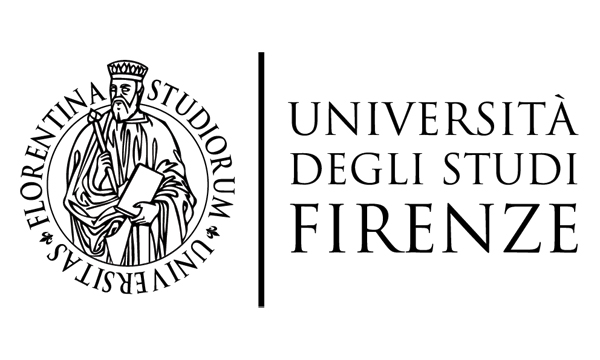


Die Republik Florenz, offiziell die Florentiner Republik (italienisch Repubblica Fiorentina, oder Repubblica di Firenze), war ein mittelalterlicher und frühneuzeitlicher Staat, dessen Zentrum die Stadt Florenz in der Toskana war.[1][2] Die Republik entstand 1115, als das florentinische Volk nach dem Tod von Mathilde von Canossa gegen die Markgrafschaft Toskana rebellierte, die riesige Gebiete kontrollierte, zu denen auch Florenz gehörte. Die Florentiner bildeten an der Stelle ihrer Nachfolger eine Kommune.[3] Die Republik wurde von einem Rat regiert, der als Signoria von Florenz bekannt war. Die Signoria wurde vom Gonfaloniere (Titularherr der Stadt) gewählt, der alle zwei Monate von den Gilden und Zünften in Florenz gewählt wurde.
Die Republik hatte eine wechselvolle Geschichte von Putschen und Gegenputschen gegen verschiedene Fraktionen. Die Familie Medici erhielt 1434 unter Cosimo de’ Medici die Herrschaft über die Stadt. Die Medici verloren die Kontrolle über Florenz 1494. Giovanni de’ Medici (später Papst Leo X.) eroberte 1512 die Republik zurück.
Florenz wies 1527 während der Italienischen Kriege zum zweiten Mal die Autorität der Medici zurück. Die Medici nahmen ihre Herrschaft 1531 nach einer 11-monatigen Belagerung der Stadt wieder auf, unterstützt von Kaiser Karl V. Papst Clemens VII., selbst Medici, ernannte seinen Verwandten Alessandro de’ Medici zum ersten Herzog der florentinischen Republik und verwandelte damit die Republik Florenz in eine Erbmonarchie.[4]
Der zweite Herzog, Cosimo I. de’ Medici, errichtete eine starke florentinische Flotte und erweiterte das Territorium, indem er im Bündnis mit Spanien 1559 die Republik Siena eroberte. Im Jahr 1569 erklärte der Papst Cosimo zum ersten Großherzog der Toskana, wodurch die Republik Florenz in das Großherzogtum Toskana überging. Die Medici regierten das Großherzogtum Toskana bis 1737.
Auf ihrem Höhepunkt war die Republik Florenz eine der wirtschaftlichen und kulturellen Zentren Europas und eine Hochburg der Renaissance. Das Mäzenatentum der Medici und weiterer aristokratischer Familien sorgte dafür, dass große architektonische und künstlerische Werke verwirklicht werden konnten. Zu den bekannten Künstlern, Schriftstellern und Gelehrten, die in Florenz wirkten, zählen Leonardo da Vinci, Sandro Botticelli, Michelangelo, Donatello, Giovanni Boccaccio, Filippo Brunelleschi, Filippo Lippi, Fra Angelico, Francesco Petrarca und Dante Alighieri.
 Eat and Drink
Eat and Drink
 Colleges and Universities in Europe
Colleges and Universities in Europe
 Music
Music